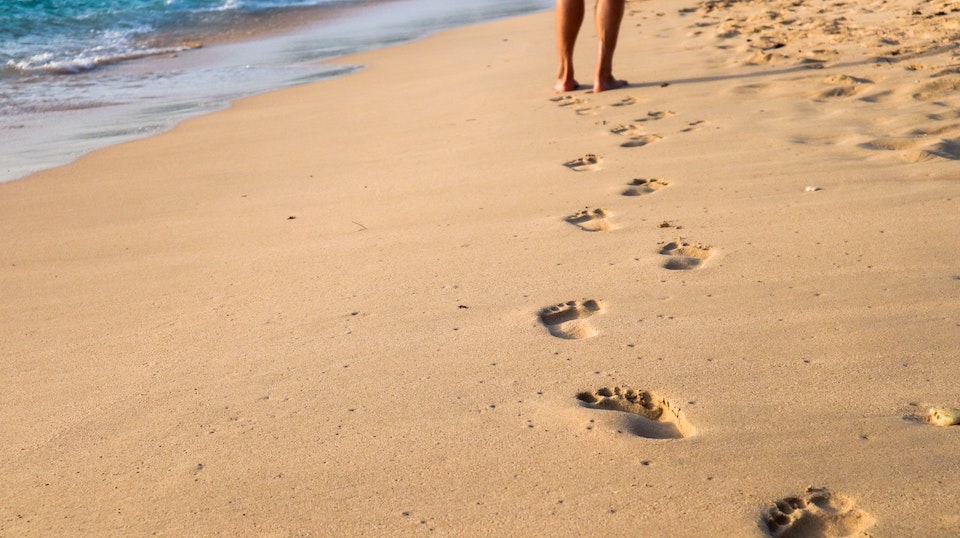From platforms to stilettos, loafers to cowboy boots, we all have our favorite pairs of shoes. Most of us are used to wearing shoes the vast majority of the time, especially if we grew up in an urban environment. But experts are now suggesting that wearing shoes may contribute to poorer health as we age.
A study published in the podiatry journal The Foot examined 180 people from different cultural groups, comparing their feet to one another’s, as well as to the feet of 2,000-year-old skeletons. The researchers concluded that, before the invention of shoes, people had healthier feet. Among the modern subjects, the Zulu pepople, who often went barefoot, had the healthiest feet, while the Europeans, who were used to wearing shoes all the time, had the unhealthiest.
Here are some of the reasons why you should consider shedding the shoes and going barefoot.
Going barefoot helps your muscles grow stronger
Ultra-padded sports shoes lead to have lazy movement patterns, and can prevent you from using certain muscle groups that can strengthen your body. Moving around barefoot is an excellent method of training strength and can help restore agility back into your frame. Have you noticed how people who do yoga regularly have great balance? They practice a lot and do it barefoot.
Going barefoot gives you healthier feet
Shoes actually create an opportunity for illness by trapping bacteria and fungus (along with the darkness, heat, and moisture) and holding them against your feet, establishing an ideal environment for the growth of icky things like athlete’s foot and toe fungus. Going barefoot also gives you relief from improperly fitting shoes, which may cause bunions, hammertoes, or other foot deformities.
Going barefoot will help you prevent injuries
Walking barefoot helps maintain the appropriate range of motion in your foot and ankle joints, as well as adequate strength and stability within your muscles and ligaments. As a result, you get stronger leg muscles, which support the lower back region. You’ll also have better balance, so you are less likely to fall over and hurt yourself. Some studies also show that going barefoot may help prevent or heal the painful foot condition plantar fasciitis.
Going barefoot will improve your posture
Shoes tend to push your posture forward, which causes certain muscles to flex unnaturally. To stay straight up, we push our butts back and bend forward from our waists. That puts our hamstrings, back, and even shoulders and neck under unnecessary pressure. When you go barefoot, your body can stand upright naturally. With time, walking barefoot allows your posture to correct itself.
Going barefoot can help heal chronic pain
Shoes have altered the natural gait of human movement. Rather than landing on the forefoot during running, shoes create the tendency to heel strike. When the heel takes the main force of running, the shock is absorbed by the joints – rather than muscles and can cause ankle, knee, and back problems. Walking barefoot encourages a natural gait pattern that improves posture and prevents injury.
Going barefoot can support your mental health
Walking barefoot can encourage mindfulness, which is a well-known tool for beating stress and anxiety. Focusing on your steps, rather than your problems, helps empty the mind and put you at ease. Consider it forced quieting of the mind (which all of us could use). This gives you a great sense of peace or mindfulness, as you’re now focused purely on the movement of your body and sensing your surroundings, not on the troubles you’ve left behind.
Going barefoot may boost your immune system
Being barefoot may even help to improve the immune system. It has been shown that the stimulation of the nerves under the soles of the feet helps to reduce inflammation and pain and even reduce blood pressure. It certainly reduces tension and stress – that’s something that you probably enjoy every single time you kick off those hot, sweaty clogs after a long day.
How to get started with going barefoot
The key to getting started with barefoot walking is to start slow. You need to be patient and start with short 15- to 20-minute sessions of walking barefoot to allow your feet and ankles to adapt to the new environment. As your feet get used to walking without shoes, you can increase the distance and time.
Try walking on some soft grass or a sandy beach to get comfortable with being barefoot outside. Enjoy the experience, notice your surroundings, and practice mindfulness. You also try doing barefoot exercise, tai chi, or yoga to encourage the development of strength and balance in your legs and feet. Purchasing a minimalist ‘barefoot shoe’ with less structure and padding than regular shoes may help ease the transition and allow you to continue your ‘barefoot training’ even in environments when you’re not able to go shoeless.
Being barefoot has lots of great health benefits. If you haven’t enjoyed some shoe-free time in a while, get those shoes off, wake up those sleeping muscles, and let your feet breathe.
-The UpWellness Team









